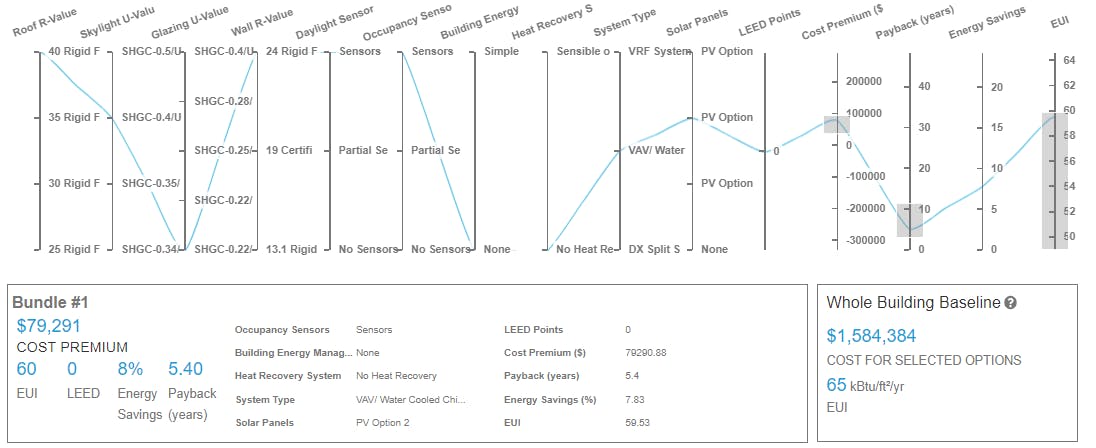Architect: Workshop Architects, Cooper Carry
Landscape Designer: Olin
MEP Engineers: Newcomb and Boyd
Contractor: Gilbane Building Company
Sustainability Consultants: Pattern r+d
01 Project Profile
Georgia Tech Campus Center – At 300,000 sq. ft., Georgia Tech’s three building project will expand the campus from its symbolic core, Tech Green, and radiate it west. Stemming from the original Student Center building, the Campus Center project will update the 1970’s building, originally meant for 7,000, to a campus hub which will accommodate over 23,000 students and 7,000 faculty and staff. The Campus Center Project will comprise of 3 buildings, the original Wenn Student Center which will be renovated, a new Exhibition Hall, and a pavilion with a small café along with a network of new outdoor pathways and plazas. The Campus Center at Georgia Tech allows the university to redefine campus centers in terms of sustainability and performance. The integrated team with Workshop, Cooper Carry, Newcomb and Boyd, Gilbane and Pattern r+d pushed the envelope in terms of setting stringent goals.
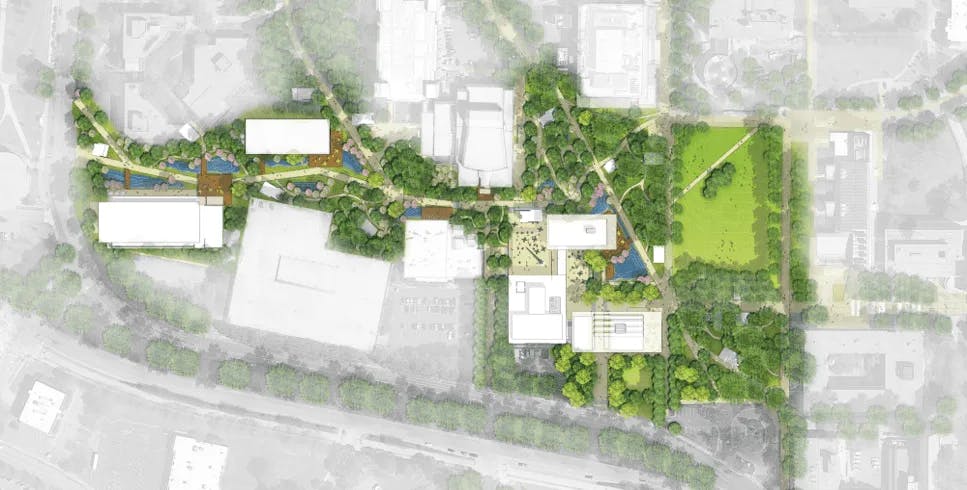
Climate Analysis
Climate Data – A basic understanding of the existing climate conditions is vital for making performance design decisions. The following climate studies are created `automatically using cove.tool.
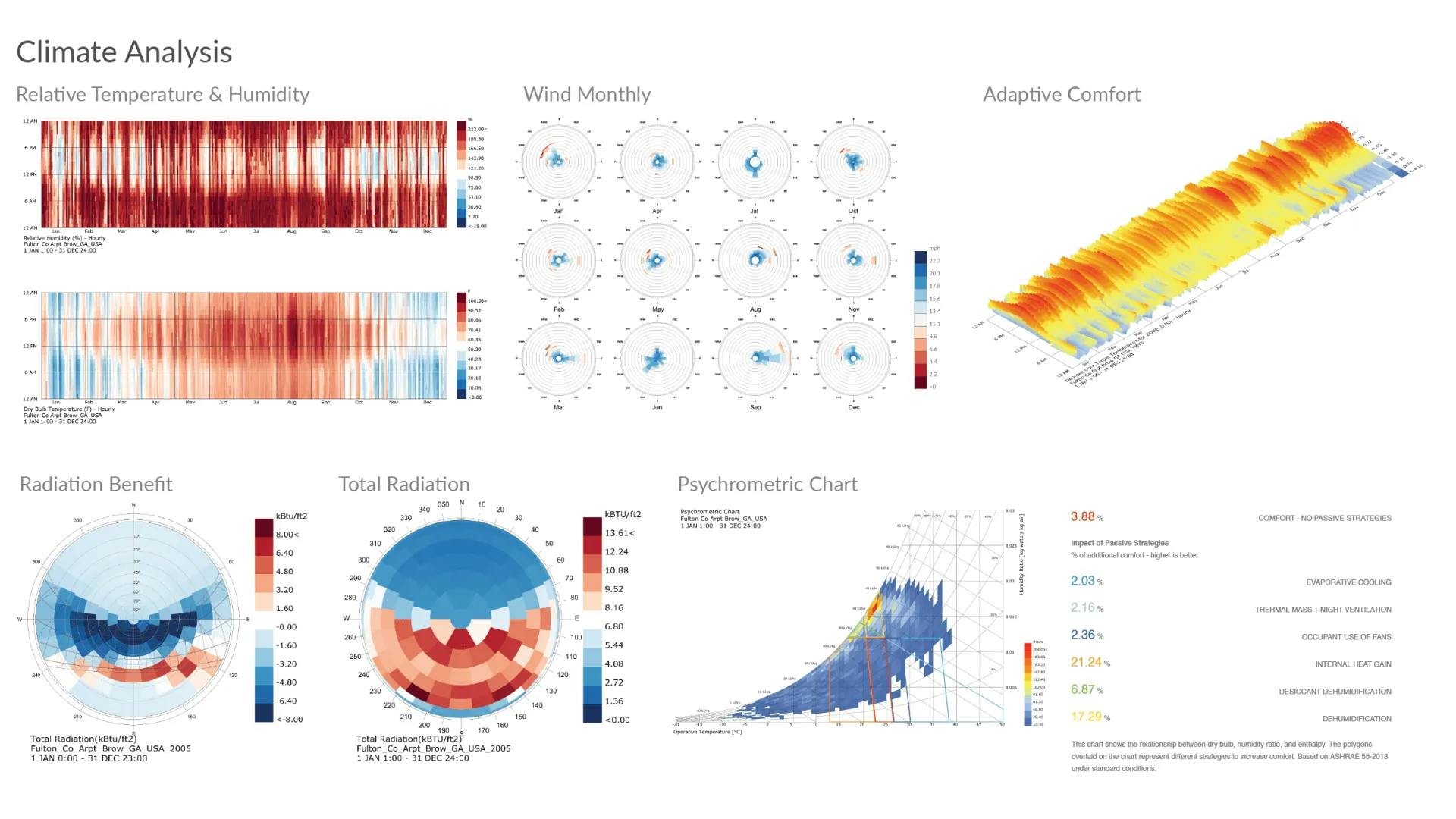
03 Energy Analysis
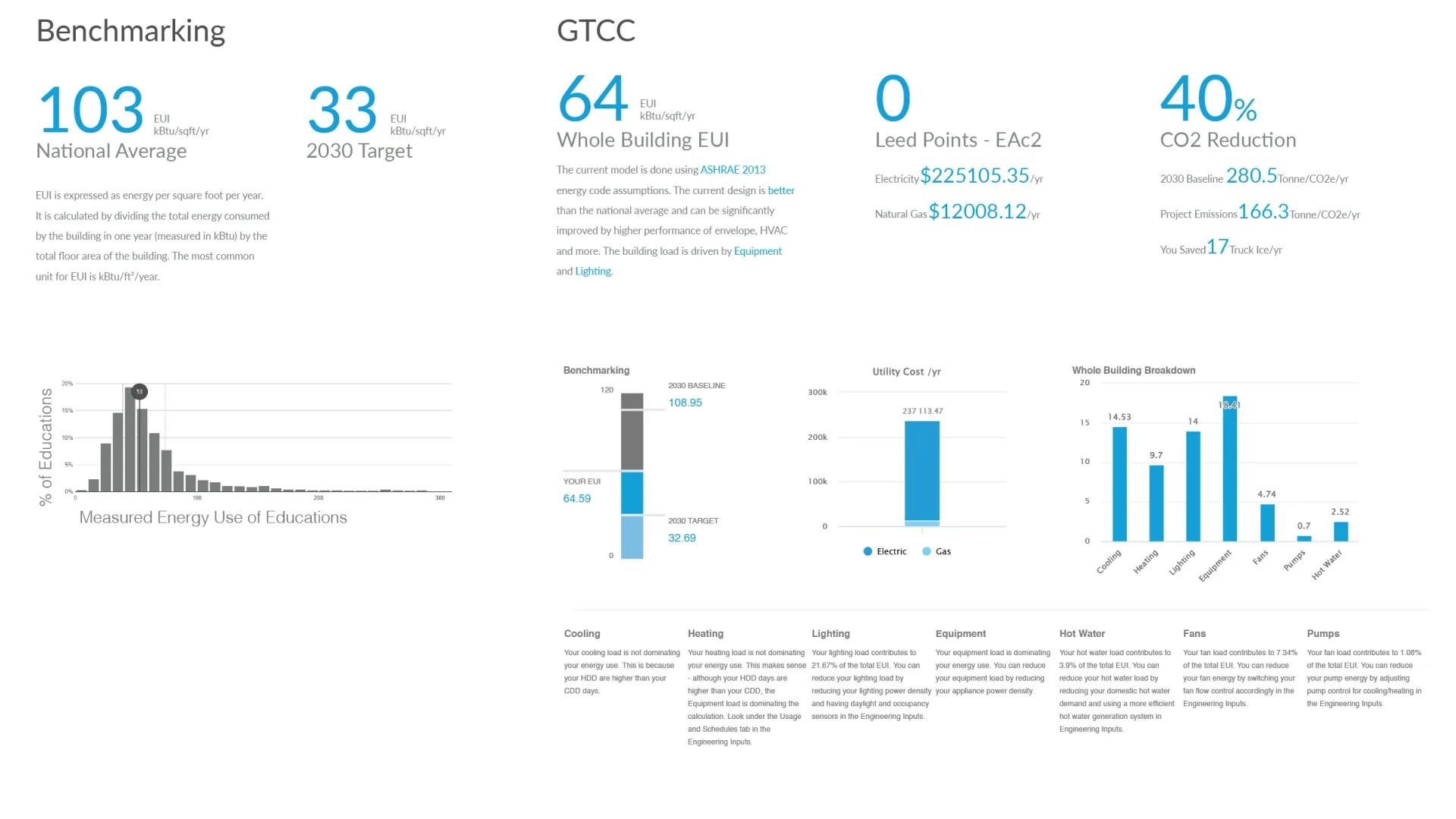
04 Daylight & Glare Analysis
Daylight quantity and quality is a critical part of any building. It becomes especially critical when studying a campus center with students. Many studies have linked daylight to productivity and wellness. Cove.tool allowed the team to use the Revit model export for the following daylight and glare studies.
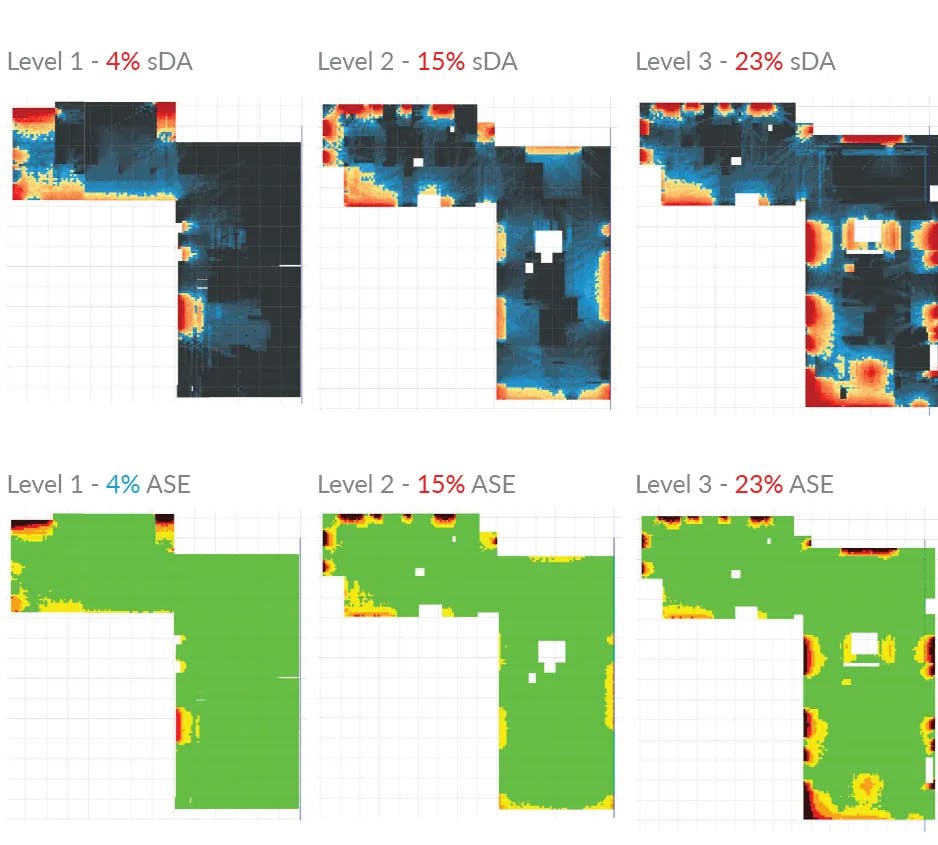
05 Facade Studies
The ability to rapidly test out varying facade design and compare glazing percentage, overhangs vs fins, window sizes and location was critical for the facade design. The below study created using cove.tool’s rapid facade prototyping features allows users to do that in minutes.
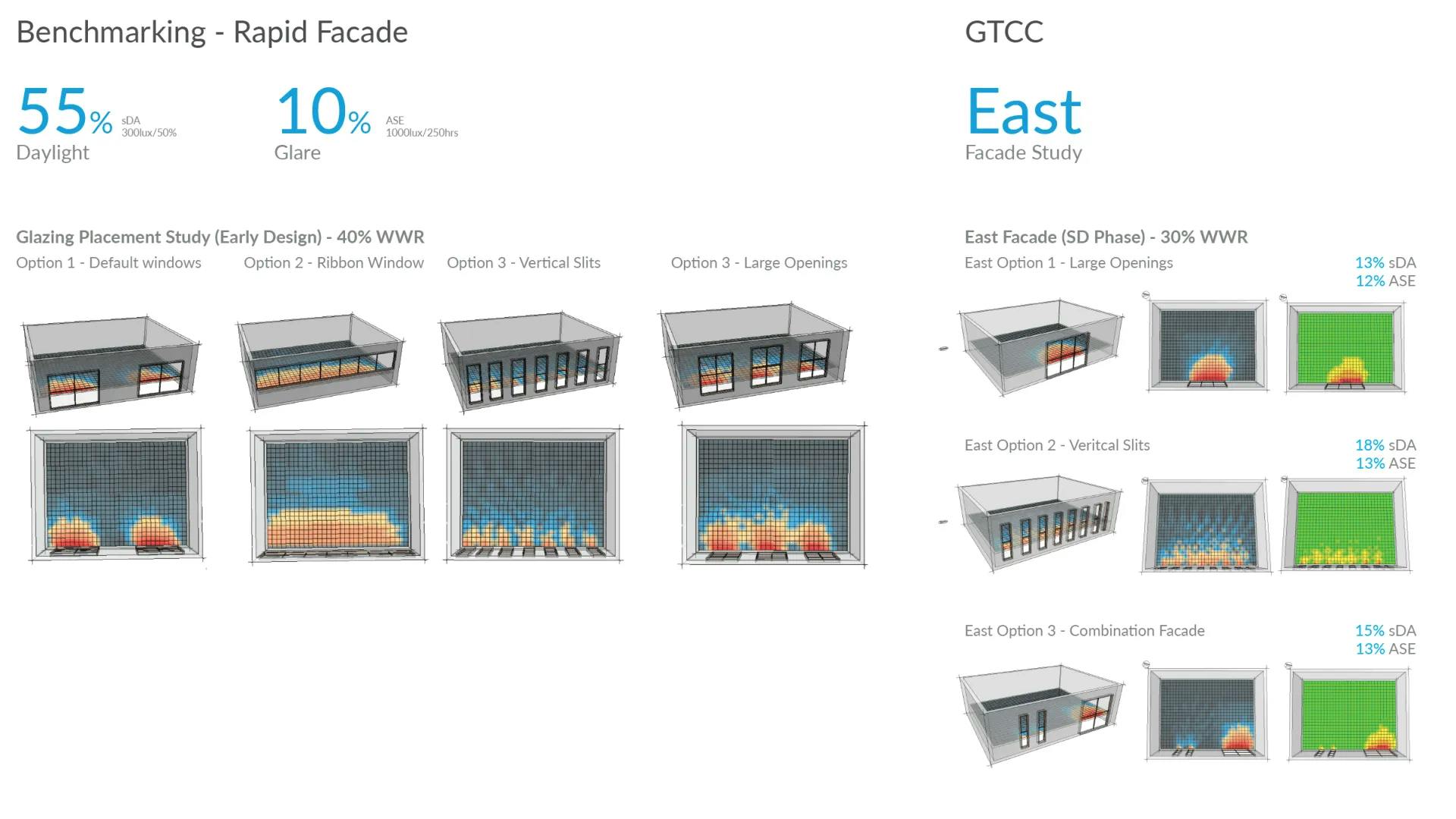
06 Water Use Analysis
Being a part of the campus meant studying not just indoor water use for low flow fixtures, but also outdoor water use. This meant grey water re-use strategies, storm water capture, rain water harvesting, irrigation and more. The cove.tool water feature had not been launched at the time of this project. This feature allows users to study indoor and outdoor water use for their project as shown below.
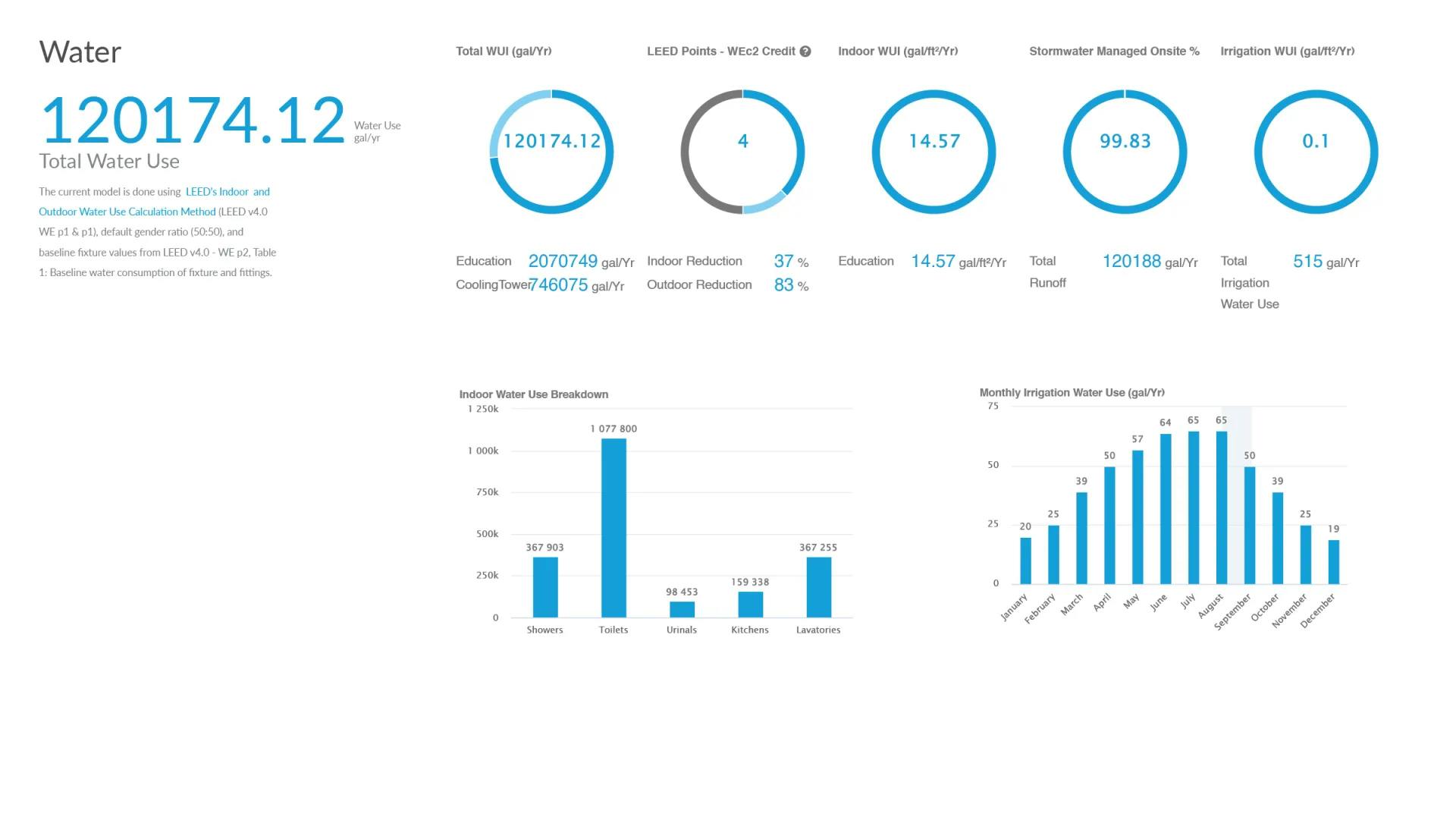
07 Cost vs Energy Optimization
Being a design-build project, cost was a critical component of decision making throughout the design. This cost was able to be optimized using cove.tool. cove.tool uses advanced algorithms to optimize for first cost and assists in making rigorous metric based decisions on cost and energy.
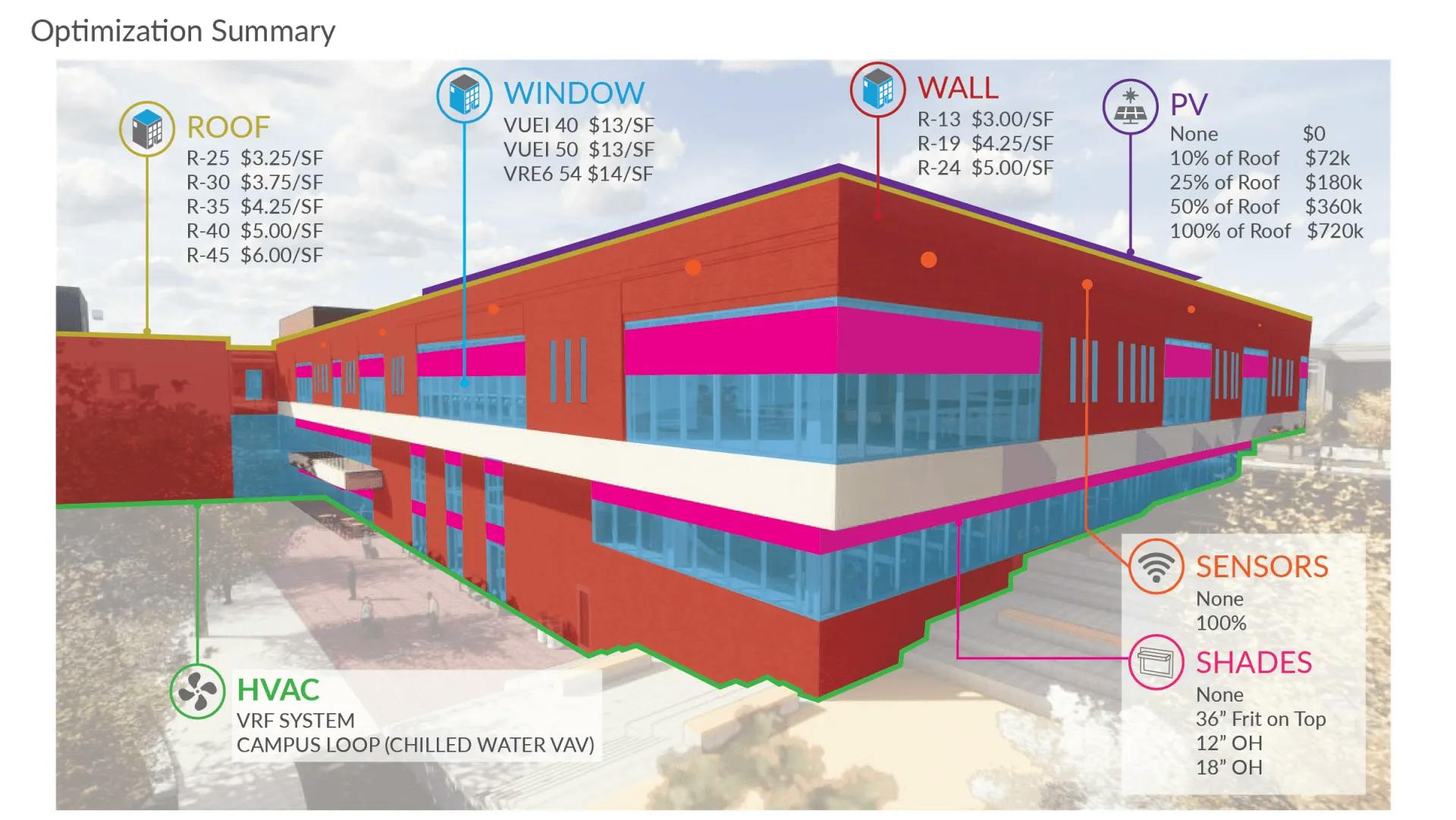
As seen in the diagram above, many decisions including, window type, wall insulation, roof insulation, HVAC, Photovoltaic panels, shading strategy and sensors had multiple options that needed to be tested. This leads to 3600 possible combinations, each with a different energy use and a different cost. Cove.tool allowed studying these and finding the most cost optimal way to get to the performance targets.

In the graph above, each vertical line represents one decision. The blue line represents every possible combination and these can be filtered based on potential LEED points, EUI, Energy Savings, Payback and First Cost Premiums. For a project with a target payback less than 10 years and EUI target of 60 or below, there were possible combinations costing under 100,000 additional dollars to 250,000 additional dollars.

The design team used cove.tool to find the absolute lowest cost option.
